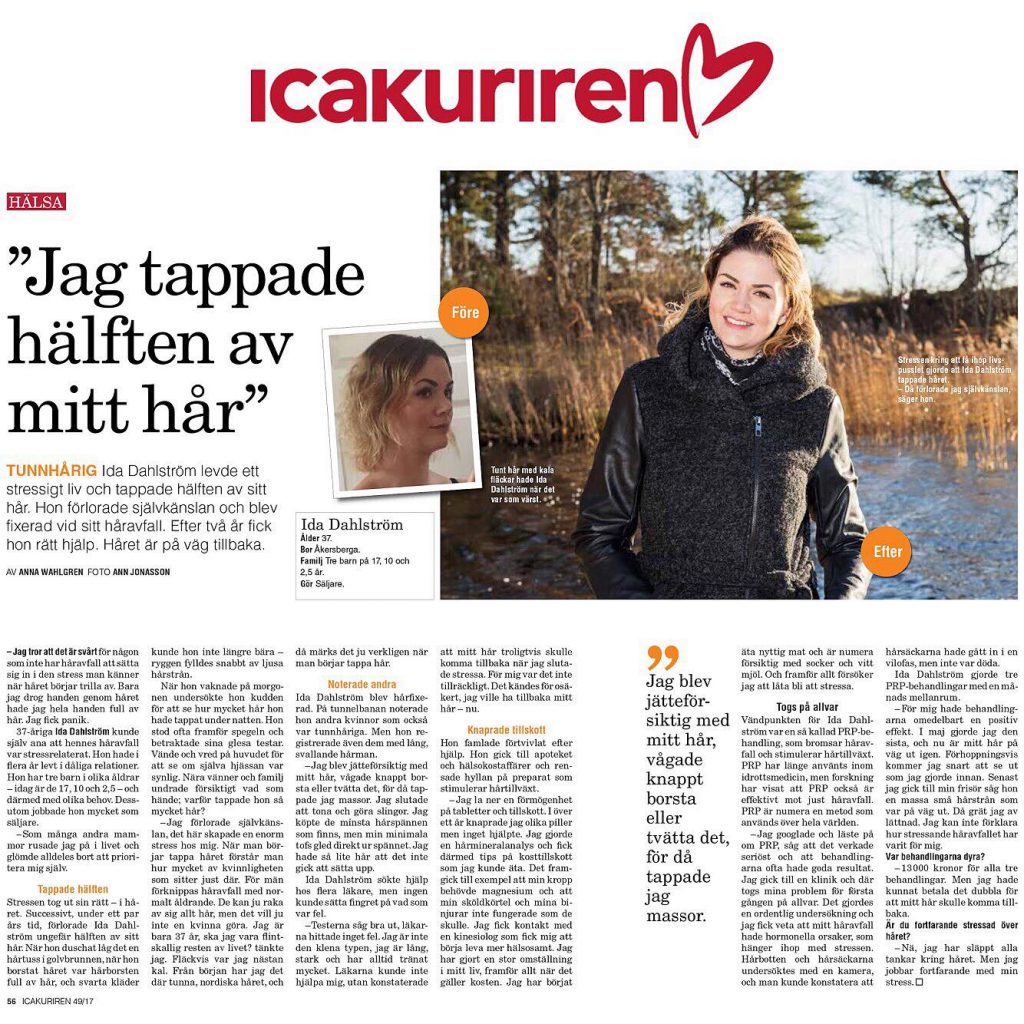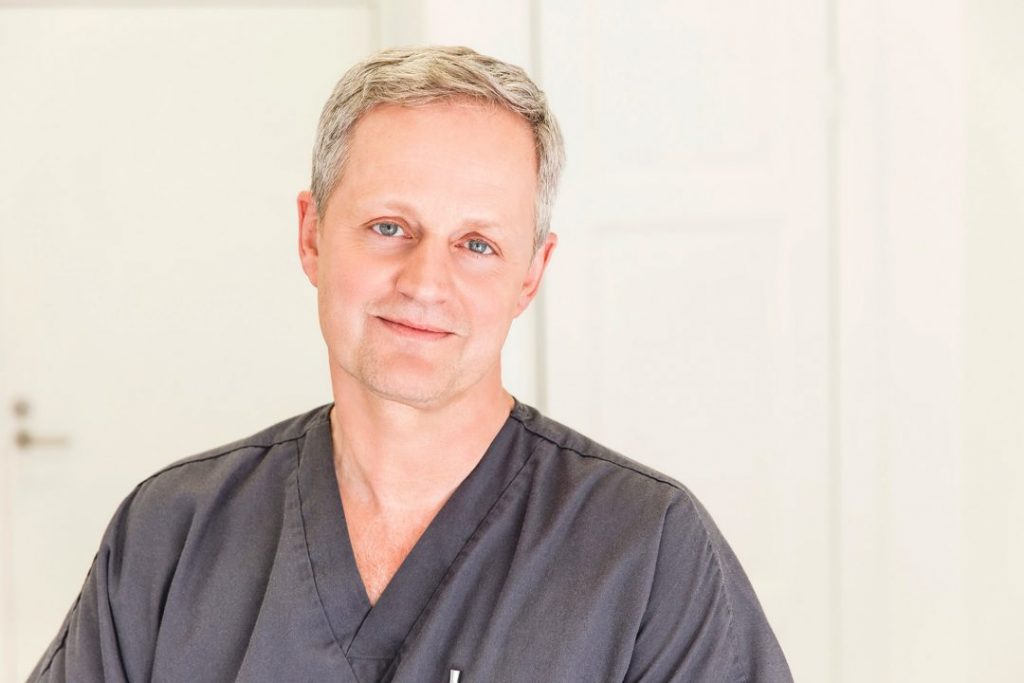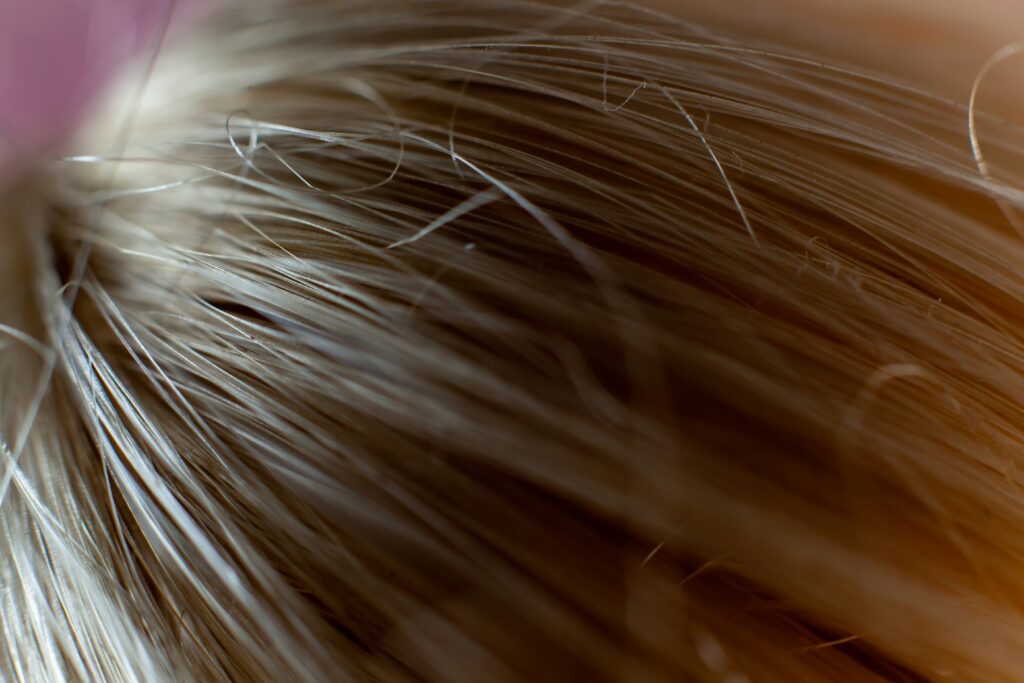
News clips
Get back lost hair - how Ida did it - Ica Kuriren
Ida Dahlström, 37, lived a stressful life and lost half her hair. She lost confidence and became fixated on her hair loss. After two years, she got the right help and today her hair is coming back.
– I think it’s hard for someone who doesn’t have hair loss to relate to the stress you feel when your hair starts to fall out or when your hair falls out in the middle of your head. Just by running my hand through my hair, I had my whole hand full of hair. I panicked, says Ida.
Ida Dahlström, who lives in Åkersberga outside Stockholm, could see for herself that her hair loss was stress-related. She had been living in bad relationships for years.
She has three children of different ages – today they are 17, 10 and 2.5 years old – and who therefore have different needs. In addition, she worked a lot as a salesperson.
– Like many other mothers, I rushed through life, completely forgetting to prioritize myself.
Read more about how stress affects hair loss
The stress took its toll – in the hair. Gradually, over a couple of years, Ida Dahlström lost about half of her hair.
When she showered, there was a lock of hair in the floor well, when she brushed her hair, the hairbrush was full of hair, and she could no longer wear black clothes – her back was quickly filled with light-coloured hairs.
When she woke up in the morning, she examined the pillow to see how much hair she had lost during the night. She often stood in front of the mirror and looked at her sparse hair.
Turned my head to see if the scalp was visible. Close friends and family cautiously wondered what was happening – why was she losing so much hair?
– I lost my self-esteem, this created a huge stress for me. When you start to lose your hair, you realise how much of your femininity is right there. For men, hair loss is associated with normal ageing. They can shave off all their hair, but a woman doesn’t want to do that. I’m only 37, I’m going to be bald for the rest of my life, I thought. In spots I was almost bald. From the beginning I have that thin, Nordic hair, and then you really notice when you start to lose hair, says Ida.
Ida Dahlström became obsessed with hair and everything started to revolve around how to get her hair back and what would be the best way to get it back.
On the subway, she noticed other women who were also thin-haired. But she also saw those with long flowing hair.
– I became very careful with my hair. I hardly dared to brush or wash it, because then I lost a lot. I stopped doing my hair in different styles. I bought the smallest hair clips available, but my minimal tassel slipped right out of the clip. I had so little hair that I couldn’t put it up.
Ida Dahlström sought help from several doctors, but no one could put their finger on what was wrong.
– The tests looked good, the doctors found nothing wrong. I’m not the weak type, I’m tall, strong and I’ve always exercise a lot. The doctors couldn’t help me, but concluded that my hair loss was due to stress and that my hair would probably come back when I stopped stressing. For me it was not enough. It felt too unsafe, I wanted my hair back – now.
She searched desperately for help. She went to pharmacies and health food stores and cleared the shelves of products that stimulate hair growth.
– I spent a fortune on pills and supplements. For over a year I tried various pills that would help stimulate hair growth. Maybe my hair loss was due to iron deficiency? But nothing helped. I did a hair mineral analysis, which gave me tips on supplements I could take. For example, it showed that my body needed magnesium, and that my thyroid and adrenal glands were not working properly.
– I got in touch with a Kinesiologist who made me start living more healthily. That in itself was positive. I have made a big change in my life, especially when it comes to diet. I have started to eat healthy food, and I am now careful with sugar and white flour. And above all, I try not to stress.
The turning point for Ida Dahlström was a so-called PRP treatment, which slows hair loss and stimulates hair growth.
PRP has long been used in sports medicine, but research has shown that PRP is also effective against hair loss. PRP is now a method used all over the world.
– I googled and read up on PRP, saw that it seemed serious and that the treatments often had good results. I went to the Nordic Hair Clinic and for the first time my problems were taken seriously. There was a proper examination and I was told that my hair loss was due to hormonal reasons, linked to stress. My scalp and hair follicles were examined with a camera, and it was found that the follicles had gone into a resting phase, but that they were not dead.
Ida Dahlström underwent three PRP treatments, one month apart.
– For me, PRP had an immediate positive effect. In May I did the last treatment, and now my hair is growing out again. Hopefully I’ll soon look like I did before I started losing the year. The last time I went to my hairdresser she said she saw lots of little hairs coming out. Then I cried with relief. I can’t explain how stressful the hair loss has been for me.
Were the treatments expensive?
– 13 000 SEK for all three treatments. But I could have paid twice as much to get my hair back.
Are you still stressed about your hair?
– Nah, I’ve let go off that. I don’t think about my hair at all, which is a good thing in itself. Stress contributes to more hair loss.
How much does PRP treatment cost?
“In most cases, help is available”
Don’t wait for years worrying about your hair loss. Seek help in time. That’s hair specialist Mats Stolt’s best advice.
Trying to treat yourself and your hair loss, and self-medicating with various pills, vitamins, shampoos and oils, without finding out what the hair loss is really caused by, is not recommended, he says. It can even make it more difficult to provide appropriate and effective treatment.
– I meet women who have been losing hair for many years, sometimes for decades. They have lived with so much anxiety. It is unnecessary. Being told what is causing the hair loss and what to do about it makes most people feel reassured. Letting go of hair stress itself has a positive effect on hair. Addressing women’s concerns is therefore an important part of the treatment,” says Mats Stolt, biochemist and clinic manager at Nordic Hair Clinic, one of Europe’s largest hair clinics specialising in hair loss.
First of all, the cause of hair loss must be localised.
– Has the patient had dengue fever? Been exposed to shock? Iron deficiency? Thyroid problems? “We send many patients to the health centre to have a blood test and check their values,” says Mats Stolt.
Female hair loss differs from male hair loss, both in cause and appearance – in women, hair tends to thin in the top third to half of the scalp.
Heredity is the most common cause of male pattern baldness. For women, the causes are more complex, and often hair loss is a combination of several factors.
Stress, hormonal changes, iron deficiency, pregnancy and thyroid problems are common reasons. As they get older – sometimes as early as their 40s – many women experience thinning hair.
The hairs become weaker, alternatively the hair follicles produce fewer hairs. But the result is the same: a feeling of significantly less hair.
Stress is a key factor. Many women come to the clinic who have been experiencing stress for a long time – both in life and over their hair loss.
Project managers and teachers are the most common occupational groups – typical professions where it is difficult to influence one’s work situation. Young career women in their 30s and 40s who work hard, have families and train hard are another common patient group.
– If you add stress to a pre-existing iron deficiency or hormonal change, there is a high risk of hair loss, says Mats Stolt.
Working a lot is not dangerous in itself. As usual, it’s the deep, stress that affects the body – and the hair.
– Lying awake at night thinking about the relationship. Constantly thinking about your job. Stress seems to take a harder toll on women than on men. We almost never see men with stress-related hair loss. In fact, quite often we recommend our clients to undergo CBT therapy to get stress under control. CBT helps against stress, and thus against hair loss, says Mats Stolt.
Many women are also helped by PRP, an effective treatment for hair loss. PRP has been widely used for decades in sports medicine, and to treat osteoarthritis. Nowadays it is a common method worldwide to stimulate hair growth.
The person is put on a tube of blood, which is centrifuged to separate platelet-rich plasma, called platelets, from the rest of the plasma and from the red blood cells.
Platelets consist of a large amount of growth factors, a kind of endogenous protein that has a positive effect on the activity of hair follicles. The blood plasma is injected with several small pricks into the scalp in selected areas.
See step by step how a PRP treatment works
– Many of our customers respond well to PRP. Results are individual, but three treatments are common. In almost all cases, hair loss is slowed down, but a lot of people get their hair back,” says Mats Stolt.
What about supplements?
– If you have an iron deficiency, you should of course take iron tablets, and those with thyroid problems are usually given Levaxin. As for ordinary supplements, I am doubtful. Few people in Sweden suffer from nutritional deficiencies. If you are a newcomer from Syria or another war zone, then yes. Then vitamins may be needed to balance out a body. Otherwise, my experience is that supplements have a marginal effect on hair loss,” says Mats Stolt.
He wishes more people knew they could get help:
– In most cases, there is a solution. Not all women can get their hair back, but hair loss can almost always be slowed down. Just stopping the loss of existing hair allows women to let go of their hair loss, focus on other things, and regain a good quality of life,” says Mats Stolt.
Most common causes of female hair loss
- Stress
- Disorders of the thyroid gland
- Iron deficiency
- Hormonal changes
- Heredity
- Menopause
- Pregnancy
- Medicines
- The skin disease Alopecia Areata (patchy hair loss, an autoimmune disease, closely related disease is Alopecia Totals, when all hair on the body disappears.)
- Telogen Effluvium (The body goes through a traumatic experience, severe surgery, heavy infection, extreme stress and the hair follicles go into rest phase and the hair falls off.)
Iron tablets/iron shots: for those with iron deficiency.
The medicine Levaxin: for people with thyroid problems.
The drug Minoxidil: is sold in Sweden under brand names such as Rogaine, Recrea and Orifarm. Increases the diameter of blood vessels and provides increased blood flow. The dilated blood vessels give the hair follicles more oxygen and allow nutrients to reach the area.
The drug Finasteride: used in Sweden only on men.
PRP-treatment: Stimulates the formation of new small blood vessels, and triggers inactive hair follicles to enter an active growth phase. When dormant hair follicles are activated, the number of hairs that grow increases.
CBT therapy: effective against stress, and thus against hair loss.




